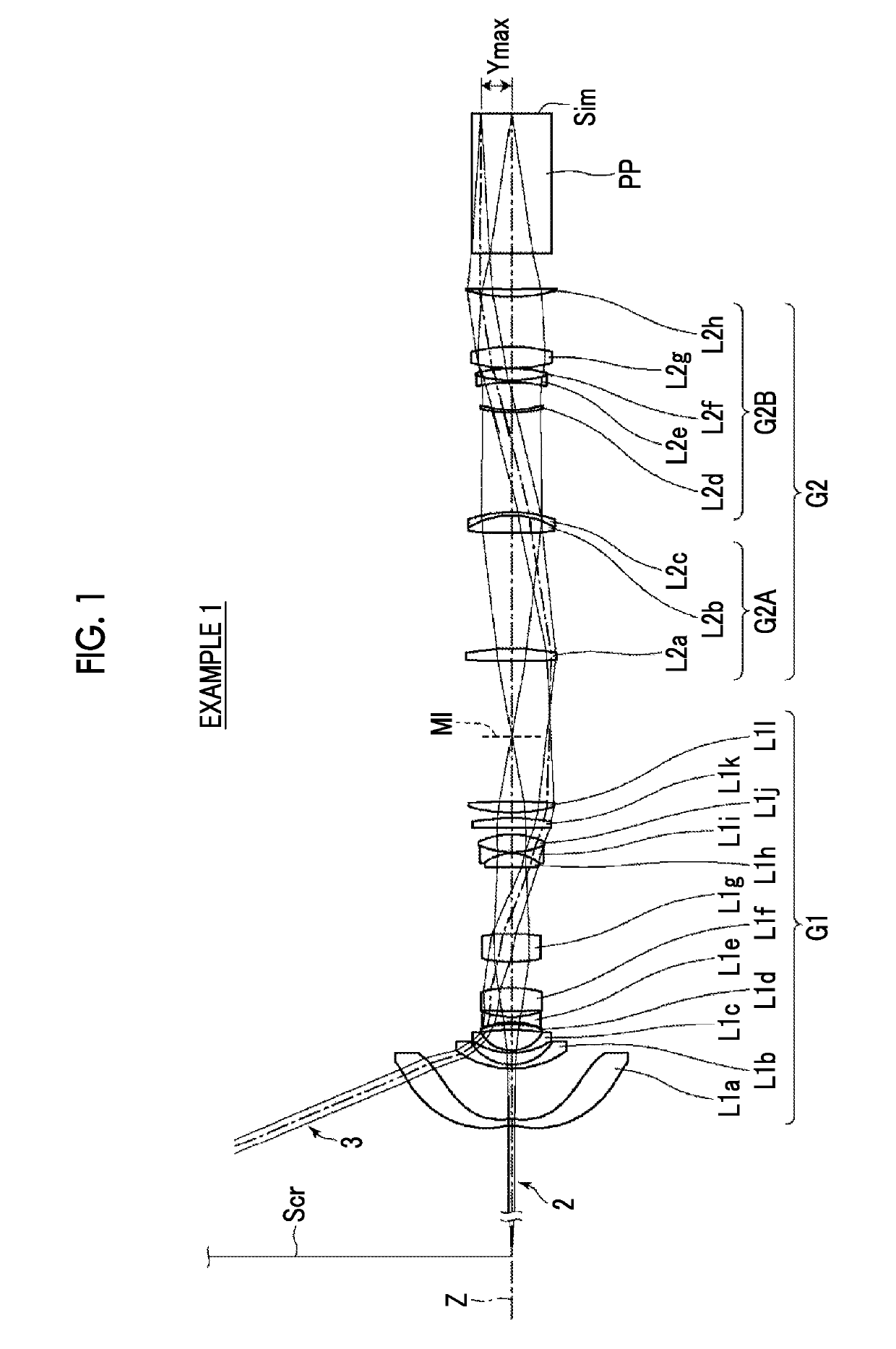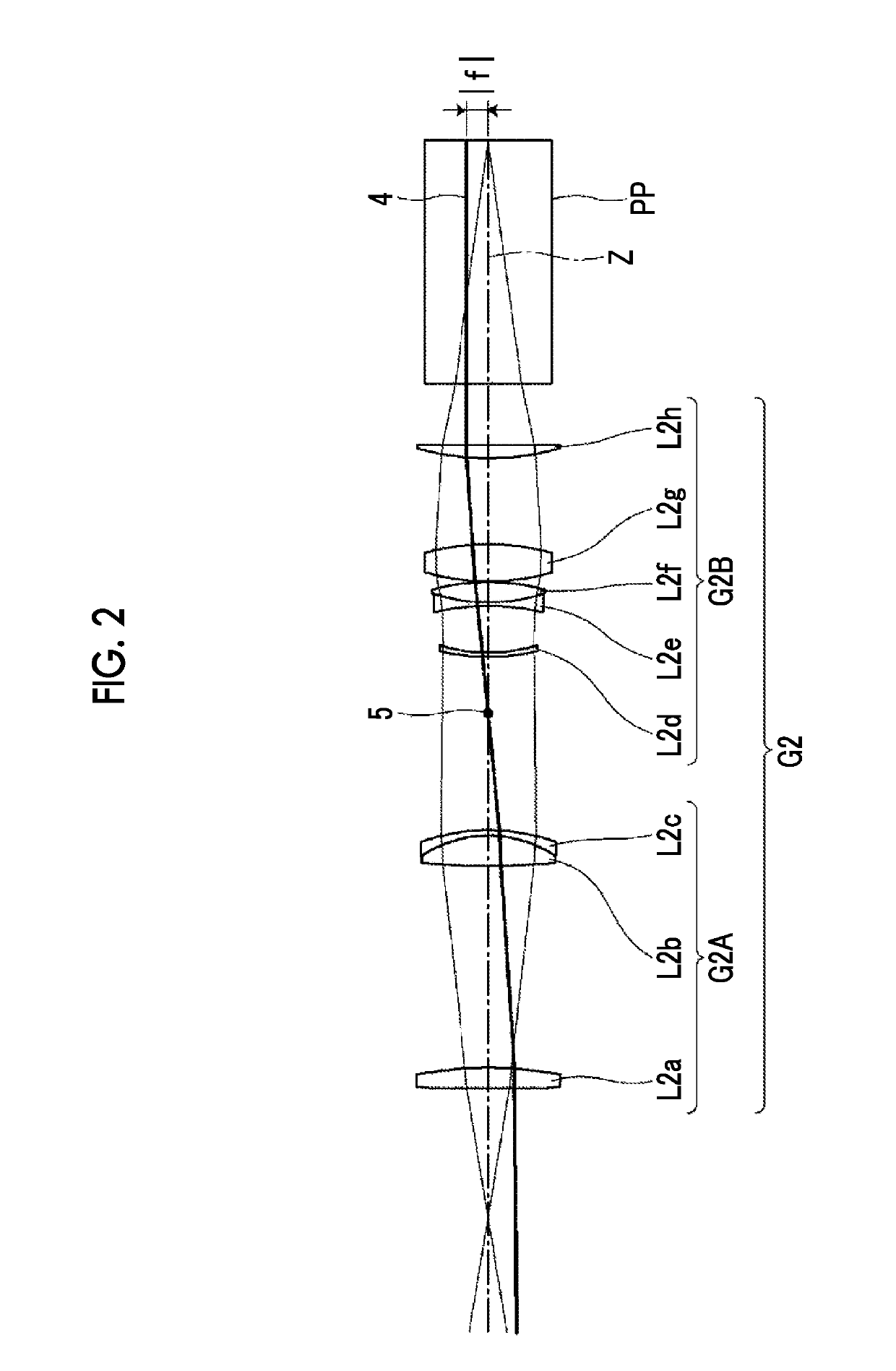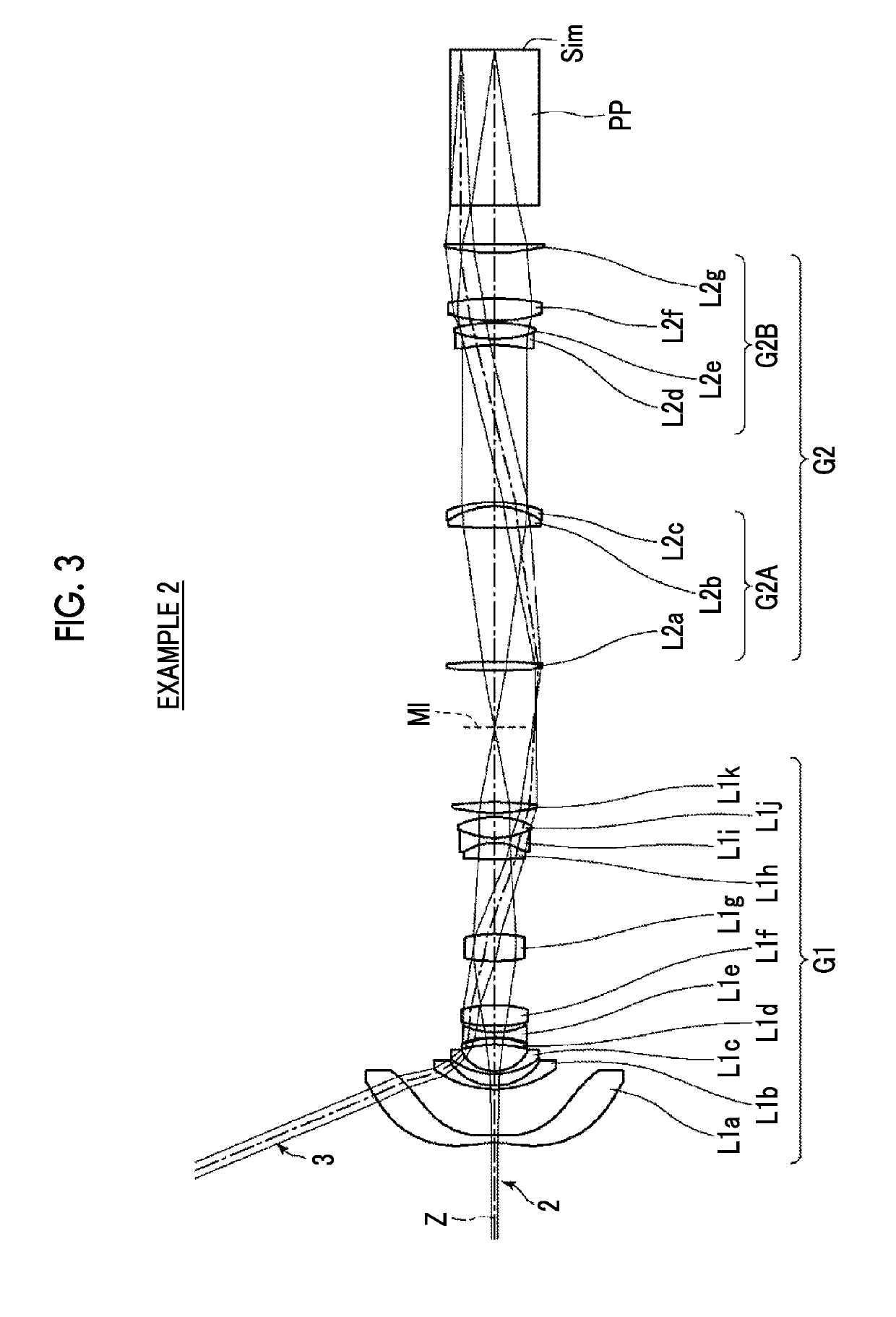Imaging optical system, projection display device, and imaging apparatus
a projection display device and optical system technology, applied in the field of imaging optical systems, can solve the problem of not saying that the back focal length is sufficiently long, and achieve the effect of sufficient back focal length and favorable optical performan
- Summary
- Abstract
- Description
- Claims
- Application Information
AI Technical Summary
Benefits of technology
Problems solved by technology
Method used
Image
Examples
example 1
[0072]FIG. 1 is a cross-sectional view of the lens configuration and rays of an imaging optical system of Example 1, and a configuration and an illustration method thereof are as described above. Therefore, repeated descriptions are partially omitted herein. The imaging optical system of Example 1 consists of, in order from the magnification side to the reduction side: a first optical system G1 that has a positive refractive power; and a second optical system G2 that has a positive refractive power. The first optical system G1 consists of twelve lenses L1a to L1l in order from the magnification side to the reduction side. The second optical system G2 consists of a front group G2A and a rear group G2B in order from the magnification side to the reduction side. The front group G2A consists of three lenses L2a to L2c in order from the magnification side to the reduction side. The rear group G2B consists of five lenses L2d to L2h in order from the magnification side to the reduction sid...
example 2
[0085]FIG. 2 is a cross-sectional view of a lens configuration and rays of an imaging optical system of Example 3. The imaging optical system of Example 2 consists of, in order from the magnification side to the reduction side: a first optical system G1 that has a positive refractive power; and a second optical system G2 that has a negative refractive power. The first optical system G1 consists of eleven lenses L1a to L1k in order from the magnification side to the reduction side. The second optical system G2 consists of a front group G2A and a rear group G2B in order from the magnification side to the reduction side. The front group G2A consists of three lenses L2a to L2c in order from the magnification side to the reduction side. The rear group G2B consists of four lenses L2d to L2g in order from the magnification side to the reduction side. The aspheric lens included in the first optical system G1 is the lens L1a.
[0086]Table 4 shows basic lens data of the imaging optical system ...
example 3
[0087]FIG. 3 is a cross-sectional view of a lens configuration and rays of an imaging optical system of Example 4. The imaging optical system of Example 3 consists of, in order from the magnification side to the reduction side: a first optical system G1 that has a positive refractive power; and a second optical system G2 that has a negative refractive power. The first optical system G1 consists of twelve lenses L1a to L1l in order from the magnification side to the reduction side. The second optical system G2 consists of a front group G2A and a rear group G2B in order from the magnification side to the reduction side. The front group G2A consists of three lenses L2a to L2c in order from the magnification side to the reduction side. The rear group G2B consists of four lenses L2d to L2g in order from the magnification side to the reduction side. The aspheric lenses included in the first optical system G1 are the lens L1a and the lens L1b.
[0088]Table 7 shows basic lens data of the ima...
PUM
 Login to View More
Login to View More Abstract
Description
Claims
Application Information
 Login to View More
Login to View More - R&D
- Intellectual Property
- Life Sciences
- Materials
- Tech Scout
- Unparalleled Data Quality
- Higher Quality Content
- 60% Fewer Hallucinations
Browse by: Latest US Patents, China's latest patents, Technical Efficacy Thesaurus, Application Domain, Technology Topic, Popular Technical Reports.
© 2025 PatSnap. All rights reserved.Legal|Privacy policy|Modern Slavery Act Transparency Statement|Sitemap|About US| Contact US: help@patsnap.com



